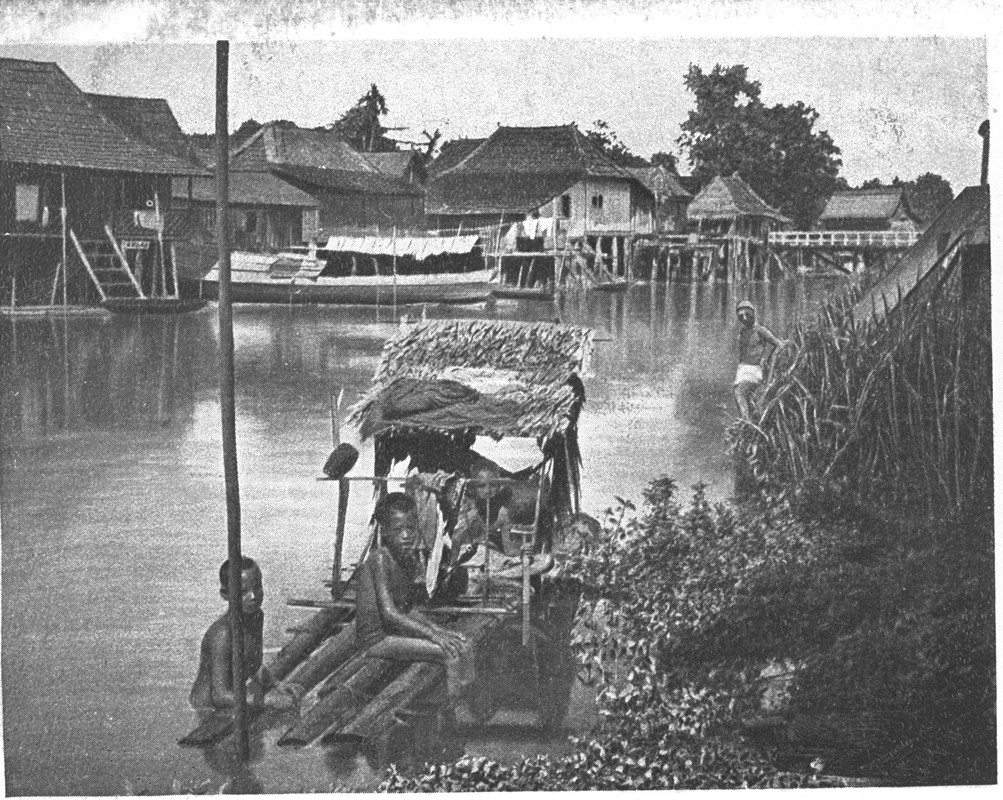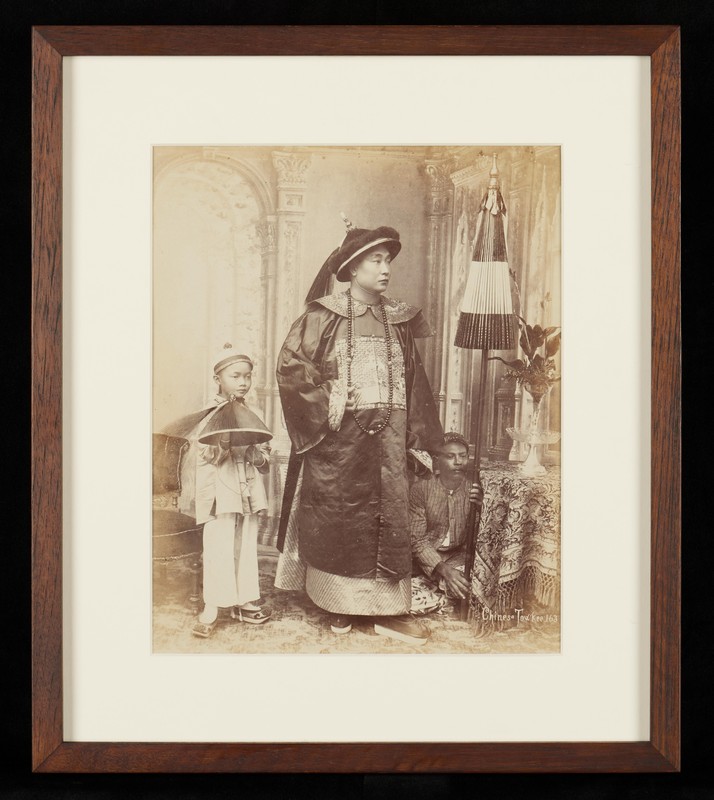A history of the Singapore Chinese Chamber of Commerce and Industry
The Singapore Chinese Chamber of Commerce & Industry (SCCCI), initially named The Singapore Chinese Chamber of Commerce, was established in 1906. The background of its establishment can be understood from three aspects: the arrival of the British and the formation of Singapore’s immigrant society, the modernisation policies of the late Qing period, and the attitude of the British colonial government.
Establishment of SCCCI
1. Arrival of the British and formation of Singapore’s immigrant society
When the British first arrived in Singapore in 1819, their pro-trade policies and establishment of a free port system successfully attracted merchants from various regions to conduct trade. At the same time, a large number of Chinese labourers were recruited to contribute to the development of the colony’s economy. By the early 20th century, Singapore had already developed the prototype of an open, diverse immigrant society.
The Chinese merchants who engaged in local business, notably entrepôt trade, became wealthy and gradually emerged as a dominant group in Singapore’s Chinese community, ascending to leadership positions. These wealthy merchants expanded their social status and influence locally, playing a pivotal role in the region and fostering a strong, emerging Chinese business community. As the business environment and societal demands became more complex, local Chinese merchants felt it necessary to establish a business association to strengthen cooperation among themselves in order to provide better services to the business community.
2. Modernisation policies of the late Qing period
After the Opium Wars, the Qing government was forced to sign unequal treaties. Humiliated, the Qing government sought to restore its country’s image and strengthen its military. The Qing government thus initiated modernisation policies in China, emphasising the development of industry and commerce. Specifically, in 1903, the Qing court established the Ministry of Commerce with the aim of “opening up commercial relations, uniting organisations, and revitalising industries”, leading to the establishment of chambers of commerce both domestically and overseas.
In 1904, the Qing government appointed the prominent Nanyang merchant Chang Pi Shih (also known as Cheong Fatt Tze or Zhang Bishi, 1841–1916) as the Chinese Imperial Commissioner for investigating Commercial Affairs in Foreign Countries to oversee the establishment of chambers of commerce in various places in Nanyang.



In late 1905, Chang arrived in Singapore. He proposed the establishment of a Chinese chamber of commerce at a banquet held at the Thong Chai Medical Institution, even personally donating 3,000 yuan as the seed fund for the establishment. The various leaders of the overseas Chinese present at the banquet all agreed with the initiative.
On 22 February 1906, after numerous meetings and discussions, local Chinese businessmen drafted the provisional charter for the Singapore Chinese Chamber of Commerce. It was officially named “Xinjiapo Zhonghua Shangwu Zonghui” (Singapore Chinese Chamber of Commerce) 1, with over 600 Chinese businessmen signing up for membership. On 16 March, the Chamber voted in an election to form its first council of 52 members. Ultimately, Hokkien businessman Goh Siew Tin and his Teochew counterpart Tan Hoon Chew were appointed as the President and Vice-President respectively.
3. Attitude of the British colonial government
Finally, the British colonial government also adopted a positive attitude towards the establishment of the Chamber of Commerce. This can be seen from the fact that the colonial government received the exemption from registration application from the Chamber on 6 April 1906 and approved it just one month later. The colonial government welcomed the emergence of a new cross-dialect representative body among the local Chinese business community, seeing it as a bridge that would facilitate communication and cooperation between the Chinese community and the government.
The submission of the exemption from registration application in 1906 also illustrated the local Chinese merchants were familiar with the administrative mechanism of the colonial government, as they used legal means to safeguard the rights and interests of the Chinese business community. The colonial government’s swift approval of this request likewise demonstrated its trust in the Chamber of Commerce.
From this perspective, the establishment of the Chamber of Commerce played an important role for both the Qing court and the British colonial government, in which both sides hoped to gain the support and loyalty of the Chamber of Commerce. The colonial government’s attitude towards the Chamber of Commerce opened up a new dynamic between politics and business in the local community.
Historical significance of SCCCI
For the Qing dynasty, the Chamber of Commerce was not just an overseas private business group; it represented the Qing government’s innovative political endeavour. The Chamber of Commerce had multiple functions, including conveying policies as an intermediary, fundraising for disaster relief; attracting investments; and promoting China-made products, education, and cultural activities. With both the Qing government and the government of the Republic of China seeking to maintain ties with the Singapore Chinese community, the role of the Chamber of Commerce was crucial.
For the local Chinese community, the establishment of the Chamber of Commerce symbolised the ability of Chinese businessmen to adapt to the trends of the times and create a novel organisation to meet internal and external needs. It also signified the first local cross-dialect and cross-trade business body, which attempted to fulfil the roles of “uniting the community, creating business opportunities, and striving for the welfare of the people”. It was key in representing the Chinese community in mediating between the Chinese and British and, by extension, safeguarding the rights of the local Chinese.
The Chamber of Commerce maintained good relations with the British colonial government in Singapore before independence. It received visits from members of the British royal family, organised celebrations for the coronation of the British monarch, supported the purchase of British government bonds, raised funds for disaster relief in Commonwealth countries, and participated in discussions on legislation related to the rights of local Chinese people. It also assisted in maintaining social order and stability in local society.
In summary, local Chinese merchants established the Chamber of Commerce at the beginning of the 20th century with the aim of shaping a new social order in colonial society, navigating the complex and intricate relationships between the local Chinese community, the overseas Chinese government, and the colonial government.
For over a century, the Chamber bore witness to Singapore’s development and exerted its influence at every stage, from the British colonial period, to the Pacific War, to Singapore’s self-governance and merger with Malaya, and finally to its independence and nation-building years.
In 1966, Singapore’s founding Prime Minister Lee Kuan Yew (1923–2015) once said, “The history of the Singapore Chinese Chamber of Commerce is a reflection of the history of Singapore”, summarising the Chamber’s journey in its early days and highlighting its ongoing mission to keep pace with the times.
This is an edited and translated version of 新加坡中华总商会成立的历史因缘. Click here to read original piece.
| 1 | In 1917, the Chinese name of the Chamber was changed from Xinjiapo Zhonghua Shangwu Zonghui to Xinjiapo Zhonghua Zong Shang Hui, the English name remained the same until 1977 a decision was made to add “industry” to the Chamber’s English name to reflect the increasing number of members belonging to the manufacturing sector. From then on, the Chamber came to be known as the “Singapore Chinese Chamber of Commerce & Industry”. |
Lee, Peng Shu. Xinjiapo zhonghua zong shanghui de juese yu gongneng yanjiu, 1906–1942 [The Role and social function of Singapore Chinese Chamber of Commerce, 1906–1942]. PhD thesis. Xiamen: Xiamen University, 2010. | |
Tan, Teng Phee, ed. The Unwavering Force of Chinese Entrepreneurial Spirit: A Centennial History of the Singapore Chinese Chamber of Commerce & Industry. Singapore: Singapore Chinese Chamber of Commerce & Industry, 2022. | |
Zhou, Zhaocheng. Elements of Enterprise: 100 Years of the Singapore Chinese Chamber of Commerce & Industry. Singapore: Singapore Chinese Chamber of Commerce & Industry: SNP International Publishing Pte Ltd, 2006. | |
Hu, Fiona Ai Lan. “Singapore Chinese Chamber of Commerce & Industry Inextricably Linked to Singapore’s Economic Miracle”. In 50 years of the Chinese community in Singapore, edited by Pang Cheng Lian, 3– Singapore: World Scientific Publishing, 2016. | |
Visscher, Sikko. The Business of Politics and Ethnicity: A History of the Singapore Chinese Chamber of Commerce and Industry. Singapore: NUS Press Singapore, 2007. |










